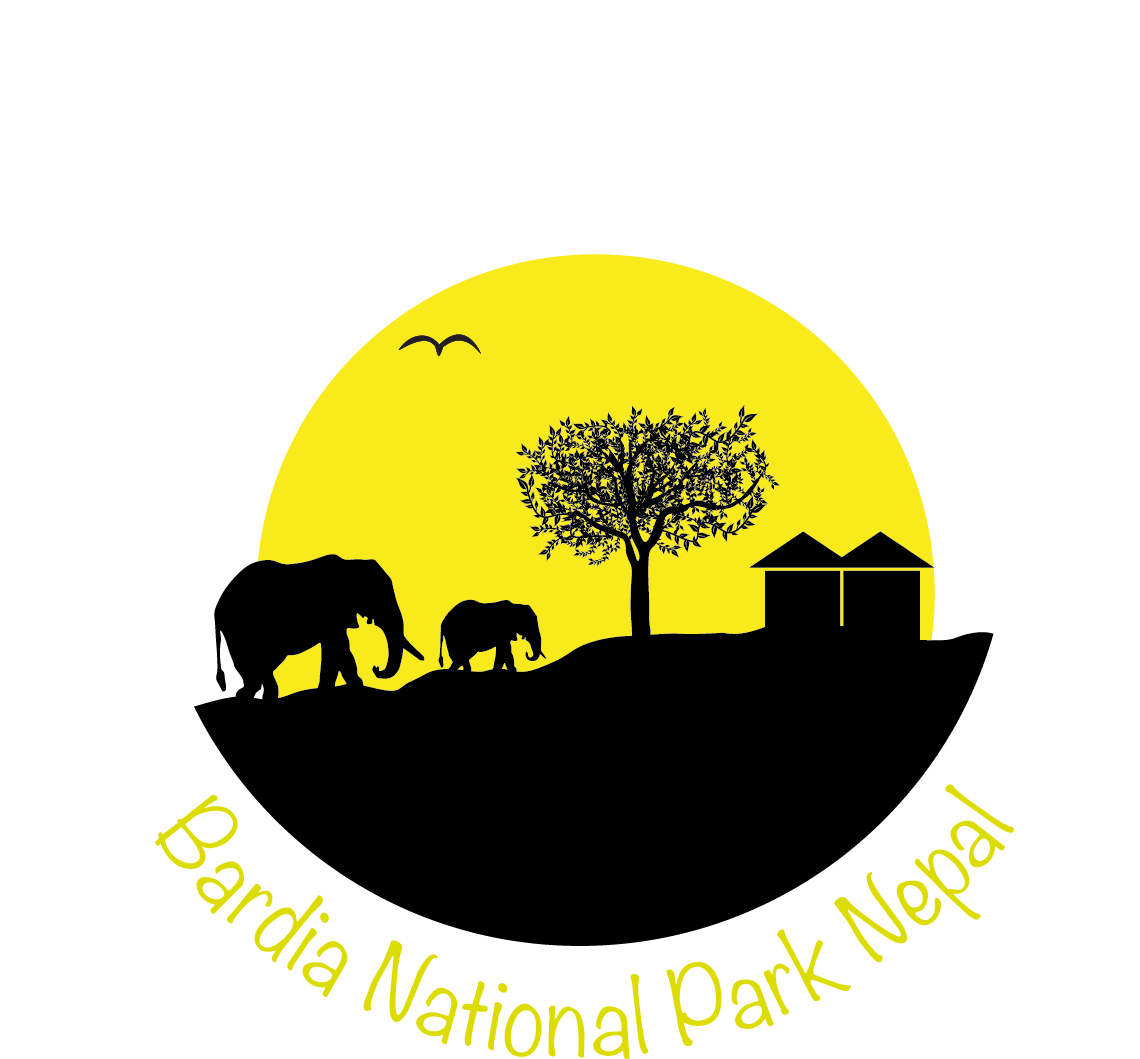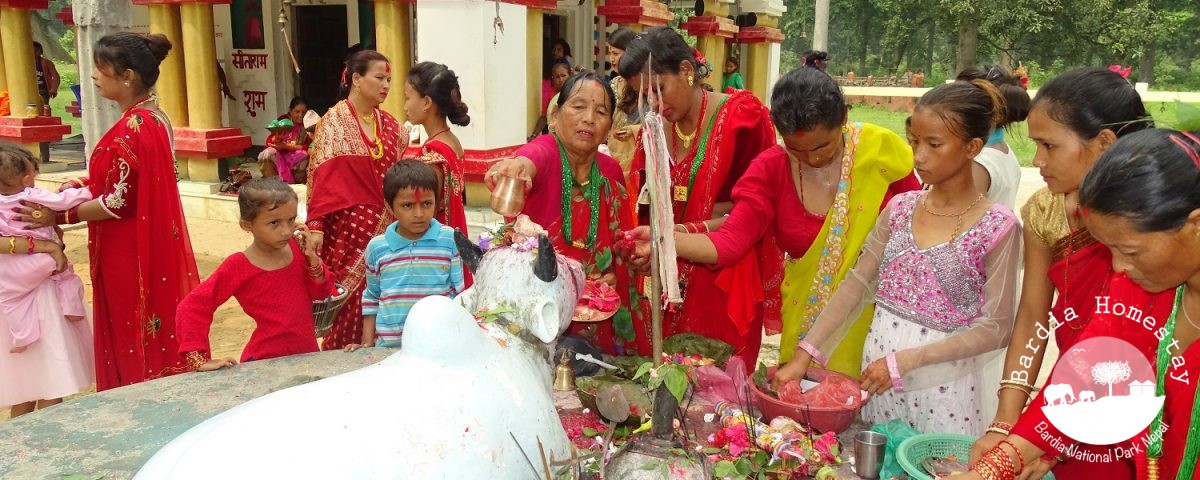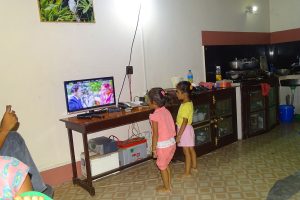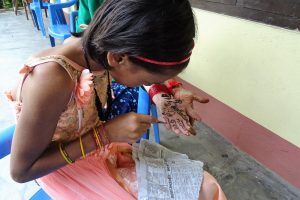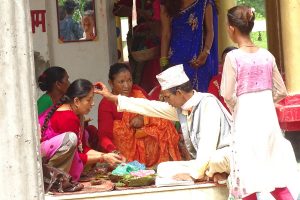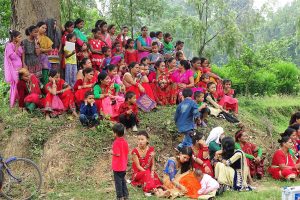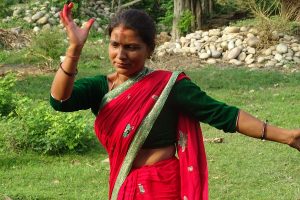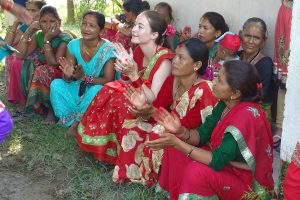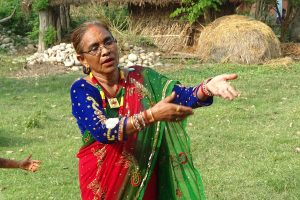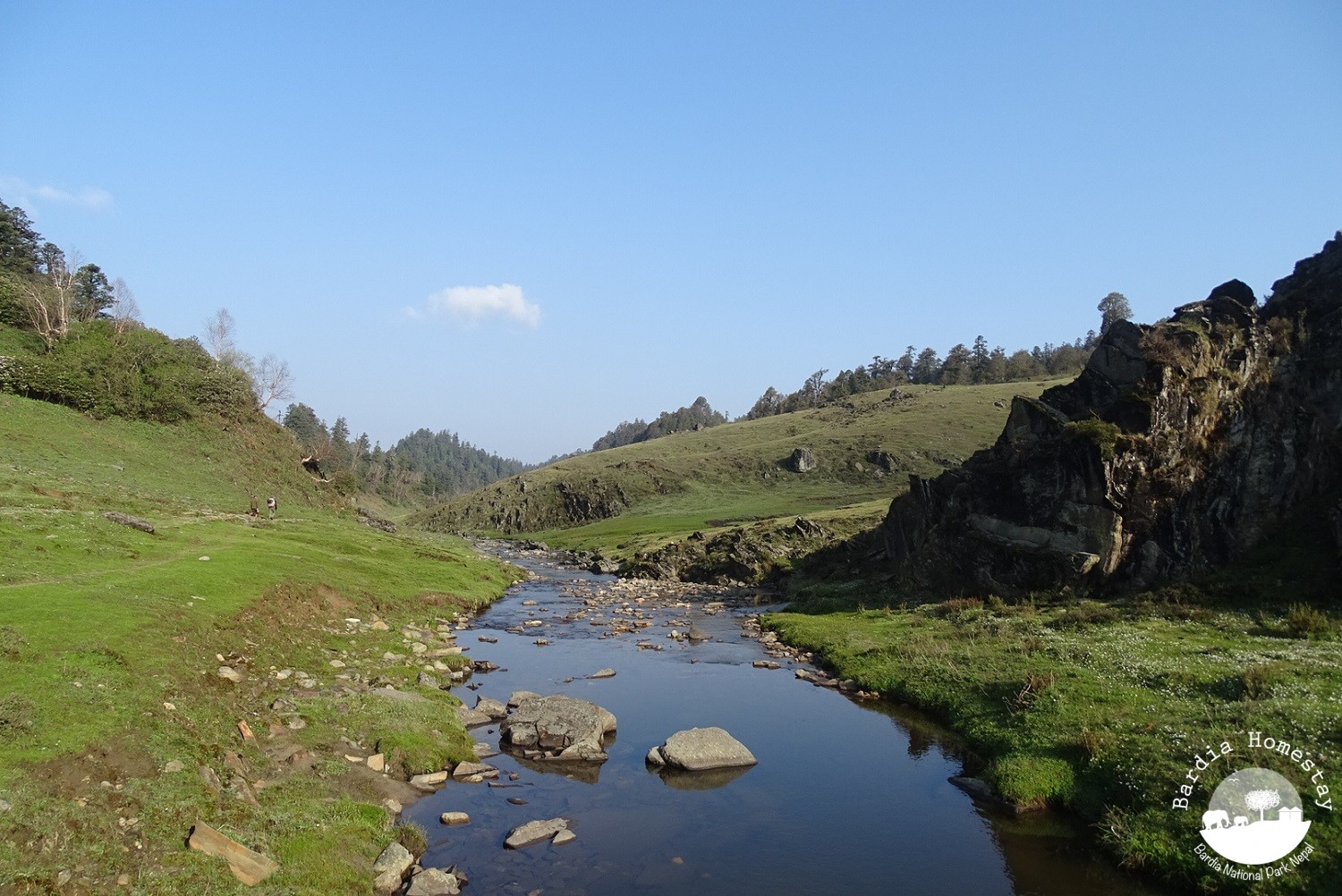
Trekking in Khaptad National Park
mei 22, 2017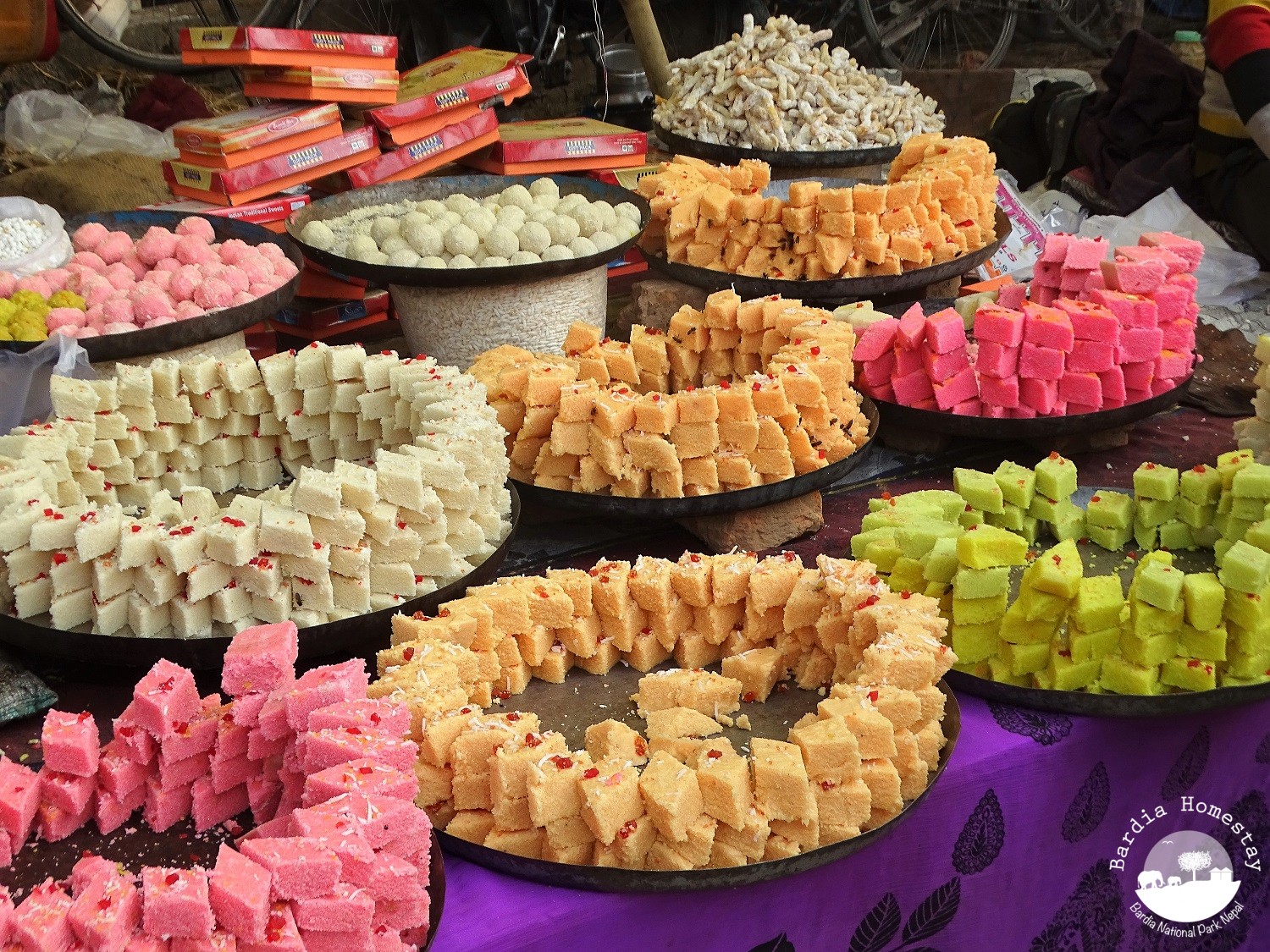
Maghi Tharu festival in Bardia National Park
januari 22, 2018‘It is obvious that as a western woman I can not compete with the wonderful dance moves of the Nepali women’
For several months you can watch on YouTube already the latest Teej songs. On most of the movies you see a group of women, dancing and wearing beautiful red colored saris. Teej is also known as the women festival and is celebrated annualy the end of August / beginning of September. This year it takes place from 23th till the 26th of Augustus. Last year we celebrated this festival with family and our American guests.
Nepal is blessed with many festivals and most of them originate from the Hinduism. Teej celebrates the victory of a wife’s love and devotion towards her husband. This is symbolized by the union of Hindu god Shiva and goddess Parvati. Nepali women love to celebrate this festival for the long life of their husband and a long and firm relationship between them until the death.
The first day of Teej is called ‘Dar Khane Din’. It literally means ‘Heavy Food day’. Today the women in our village are busy with preparing food like many kinds of bread. In the evening it is time to come together. About 20 family members gather in our home. Budhi his sister is, like always when there is a family gathering, head of the kitchen team. Her food (rice, vegetables, meat and bread) is always delicious. In our kitchen Teej songs are being played on the televison and the little childeren dance on it. Most of the women celebrate this evening with eating a lot of food till midnight when the second day of Teej starts.
- Children dancing on Teej movies
- Preparations henna painting
- Offers at Thakurdwara Shiva temple
This second day is the main day of Teej and is the fasting day for the married women. Some of them live without a piece of food and drops of water, while some others take liquid and fruit. On this day, the married women wear their red colored sari. Red is the colour that most women wear during their marriage day and during festivals. It is said that Teej got ist name from a small red insect that comes out of the soil during the rainy season.
In the morning the women walk together to the main temple in our village Thakurdwara, where they worship Shiva and Parvati by offering flowers, sweets and fruit. From the priest they receive blessings for a healthy life of their husband and a happy marriage. The unmarried women can also bring an offer with the hope to find a nice husband in the future. On this day the men are not allowed to enter the temple, but outside on the lawn they watch with full of admiration to the dancing women.
- Blessings from the priest
- Women gathering at the Thakurdwara temple
- Beautiful dancing
In the afternoon our American guest Krista and I would love to join the Nepali women. But of course we have to dress up for the occassion. Unfortunately I do not have a red sari. Luckily my mother in law has a beautiful green one, which is also allowed to wear. A sari is a piece of cloth of 7 meter long and 1 meter wide which is wrapped around the waist and shoulder. You can imagine that is not easy to put it on by yourself. Some neighbours come to our home and they make sure my sari and Krista her sari fits well. Part of the preparation is also to colour our hands with henna. And of course we put on our red bracelets and necklace before we are ready to go.
Only 5 minutes away from our home is a small temple where a group of 20 young and older women and childeren gather. They arranged a small music box with Teej songs. It is still very warm in the sunshine (30 degrees) and in a small piece of shade near the temple they perform their beautiful dances with a lot of passion. Mostly alone and encouraged by the other women. Of course Krista and I try to do our best to dance the Nepali way but its obvious that as a western woman I can’t compete with the beautiful dance moves of the Nepali women. Though the women fast throughout the day they show a lot of energy and are having lots of fun.
- Shivapur woman dancing with passion
- Enthusiastic audience at Shivapur temple
- Teej dancing Shivapur temple
Around 5 PM it is time for the women to go home. Despite the fact that Teej is a women festival and they themselves are not allowed to eat, they have to cook for their husband and children. Empowerment and emancipation is still a long way to go. We walk through the village and Krista and I are invited in one of the houses to eat bread and rice pudding. They know that we as Western women are allowed to eat today. They even give us a hand fan to cool down after our intense efforts to dance properly.
On the third day the hindu women get up early, they wash themselves and they do an offer ceremony once again before they are allowed to take solid food again. Budhi his sister comes to bring even more nice bread and food. So all that we do today is sit, relax and eat.
We wish everybody a Happy Teej 2017!
(Written by Sonja from Bardia Homestay)
